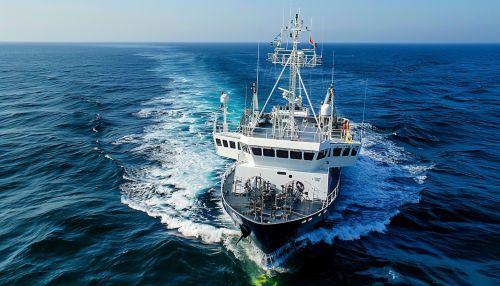Stock Assessment
Introduction
Stock assessment refers to the scientific process of collecting and analyzing biological and statistical information to determine the changes in abundance of fishery stocks in response to fishing, and, to the extent possible, to predict future trends of stock abundance. Stock assessments are based on resource surveys; knowledge of the life history, growth, and reproductive capacity of the fish; and catch statistics. Fisheries scientists use this information to make management recommendations to regulatory authorities, such as catch quotas or season closures.


Biological and Statistical Data Collection
The first step in a stock assessment is the collection of biological and statistical data. This involves the use of various methods to collect information on the size, age, and sex composition of the fish stock, as well as data on their growth, mortality, and reproductive rates. The most common methods used for data collection include acoustic surveys, trawl surveys, and longline surveys. These surveys provide a snapshot of the fish population at a particular time and place, which can be used to estimate the overall size and structure of the stock.
Life History, Growth, and Reproduction
Understanding the life history, growth, and reproductive capacity of a fish stock is crucial for accurate stock assessments. Life history refers to the sequence of events related to survival and reproduction that occur from birth to death in an organism's life. In fish, this includes events such as hatching, juvenile development, maturation, reproduction, and aging. Growth refers to changes in size (length and weight) and age over time, while reproduction involves the production of offspring. These biological characteristics vary widely among fish species and can greatly influence the resilience of a stock to fishing pressure.
Catch Statistics
Catch statistics are another important component of stock assessments. These data, which are usually obtained from commercial and recreational fishers, provide information on the number and size of fish caught, as well as the amount of effort (e.g., number of hours fished, number of hooks used) expended to catch them. Catch statistics can be used to estimate fishing mortality - a key parameter in stock assessments. However, catch statistics can be subject to various sources of error, including misreporting and underreporting, and thus must be used with caution.
Stock Assessment Models
Once the necessary data have been collected, they are input into stock assessment models. These models, which are mathematical representations of the fishery, use the data to estimate various population parameters, such as abundance, biomass, and fishing mortality. The models also allow scientists to explore different management scenarios and predict the impact of different fishing strategies on the stock. There are many different types of stock assessment models, ranging from simple surplus production models to more complex age-structured models.
Management Recommendations
Based on the results of the stock assessment, fisheries scientists make management recommendations to regulatory authorities. These recommendations may include catch quotas, which set a limit on the amount of fish that can be caught in a given period; season closures, which prohibit fishing during certain times of the year; and gear restrictions, which limit the types of fishing gear that can be used. The goal of these management measures is to ensure the long-term sustainability of the fishery while providing for the economic and social needs of the fishing community.
Challenges and Future Directions
Despite the critical role of stock assessments in fisheries management, they are not without their challenges. One of the main challenges is the inherent uncertainty in the data and models used in the assessments. This uncertainty can arise from various sources, including sampling error, model misspecification, and environmental variability. To address this issue, scientists are increasingly using approaches such as Bayesian methods and Monte Carlo simulations to quantify and incorporate uncertainty into their assessments.
Another challenge is the need for more timely and accurate data. Advances in technology, such as electronic reporting and remote sensing, are helping to address this issue by providing more real-time data on catch and effort. However, these technologies also raise new challenges in terms of data management and privacy.
Looking ahead, the field of stock assessment is likely to continue evolving in response to these challenges and the changing needs of fisheries management. Key areas of future research and development include the integration of ecosystem considerations into stock assessments, the development of more sophisticated models that can account for complex biological and ecological processes, and the improvement of data collection and analysis methods.
